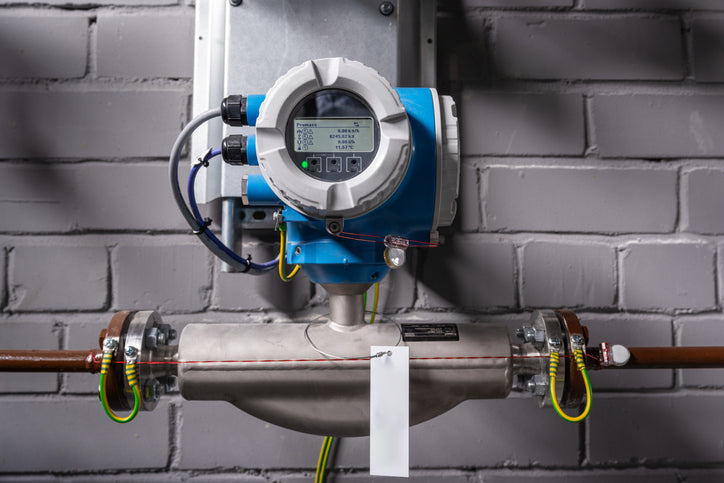Liquid Flowmeter Calibration – Gravimetric (Weighing) Method
-

Quick Turnaround Guaranteed
We understand that time is critical. That’s why we prioritise fast, efficient service without compromising on quality or accuracy. Whether on-site or in-house, our streamlined processes ensure minimal downtime and maximum reliability—every time.
-

On-site Calibration Service
Our expert technicians come to you, providing convenient and efficient calibration at your location. Minimise downtime and maintain compliance with our fully equipped mobile calibration units—delivering accuracy, reliability, and quick turnaround on-site.
-

NATA Accredited
Our calibration services are NATA accredited to ISO/IEC 17025, ensuring the highest standards of accuracy, reliability, and compliance. Trust in certified expertise backed by over 33 years of industry experience.
Since 1992 NATA Accredited (ISO/IEC 17025) – includes compliance with AS 1379.
-

24-Hour Breakdown Service
We offer round-the-clock support to minimise downtime and keep your operations running. Our 24-hour breakdown service ensures fast response and expert assistance whenever you need it most.
Precision On-Site Calibration Backed by 28 Years of Experience
Independent Scale Service has been delivering on-site liquid flowmeter calibration using the gravimetric (weighing) method for over 28 years. Our customised calibration truck is equipped with a purpose-built flowmeter calibration system, enabling high-accuracy, efficient, and traceable calibration at your location.

Why Weighing Method?
The gravimetric method is one of the most accurate techniques for flowmeter calibration. By comparing the actual weight of dispensed liquid against the indicated volume, this method ensures highly precise and repeatable results—making it ideal for industries that demand strict quality control and compliance.
Our Current Clients
-
Our Flowmeter Calibration Services Include
• On-Site Calibration using weighing method for minimal process disruption
• Maintenance & Repairs: Fault diagnosis, recalibration, and component replacement
• Flowmeter Supply: Trusted brands including Manuflo
• Installation Services: Removal of existing units, supply and installation of new flowmeters, full cabling and setup, followed by calibration
-
Industries We Serve
• Concrete & Construction Materials – Admixture and water batching
• Chemical Manufacturing – Accurate liquid blending and dosing
• Food & Beverage – Precision in recipe-based ingredient control
• Water Treatment – Chemical injection and dosing systems• Pharmaceuticals – Compliance with regulated liquid dispensing standards
Calibration Capabilities
-
Flowmeter Types:
- Electromagnetic
- Turbine
- Ultrasonic
- Positive Displacement
-
Applications:
- Concrete batching
- Admixture dosing
- Water-based systems
- Food and chemical batching
-
Calibration Method:
- Gravimetric (weighing-based calibration with certified test weights)
-
Calibration Range:
- From low-volume flow (ml/min) to large-scale batching systems
Why Choose Independent Scale Service?
✔ On-site convenience with minimal downtime
✔ Expert calibration engineers with decades of experience
✔ High-accuracy equipment designed for industrial environments
Ensure your flowmeters are calibrated to the highest standards.
📞 Contact Independent Scale Service today to book your on-site service.
Faq
Introduction to Flowmeter Calibration
Flowmeters are critical instruments used to measure the flow rate of liquids in applications ranging from water management to manufacturing processes. The accuracy of flowmeters directly impacts process efficiency, product quality, and cost control. Calibration ensures that the flowmeter delivers readings within the acceptable error margins, aligning with standard measurements.
Understanding the Weighing Method
The weighing method of calibration involves determining the flow rate of liquid by measuring the weight of the liquid collected over a specified period. The principle is straightforward: the mass of the liquid, combined with its density, provides a reliable basis for calculating the flow rate. This method is particularly suitable for high-accuracy requirements and is used extensively in laboratories and industries.
Factors Affecting the Accuracy
Liquid Properties
The density and viscosity of the liquid can influence the flow characteristics. It is crucial to account for temperature changes, as they affect density.
Environmental Conditions
Ensure the weighing scale and collection vessel are placed on a stable surface free from vibrations and external disturbances.
Flow Stability
Maintaining consistent flow conditions during the calibration process is vital for precise measurements.
Equipment Precision
Using high-quality instruments, such as precision balances and flowmeters, ensures better accuracy.
Advantages of the Weighing Method
• High Accuracy: The weighing method provides a direct and highly reliable measurement of mass, making it one of the most accurate calibration techniques.
• Simplicity: The procedure is straightforward, with minimal reliance on complex equipment.
• Versatility: This method is suitable for calibrating various types of flowmeters, including volumetric and mass flowmeters.
• Traceability: The method allows for traceable calibration standards, which are crucial in regulated industries.
Applications
The weighing method is used in numerous sectors, including:
• Food and Beverage Industry: Ensuring precise measurement of liquids in production lines.
• Pharmaceutical Sector: Achieving accurate dosing of liquid medicines.
• Water Management: Monitoring and controlling water flow in municipal systems.
• Laboratory Research: Conducting experiments requiring precise liquid flow measurement.
Challenges and Solutions
Challenge: Flow Fluctuations
Flow instability can introduce errors in measurements. Using advanced control systems can mitigate this issue.
Challenge: Equipment
LimitationsInadequate precision in weighing scales and timers can compromise accuracy. Investing in high-quality instruments reduces these risks.
Challenge: Human Error
Mistakes in timing or weighing can affect results. Automating parts of the process can enhance consistency.
Conclusion
The liquid flowmeter calibration using the weighing method is a cornerstone of precision measurements in numerous industries. Its simplicity, accuracy, and versatility make it an invaluable tool for ensuring reliable operations and compliance with standards. By following the outlined steps and considerations, professionals can achieve robust calibration results that uphold the integrity of their processes.

Get in touch now
Connect With Us
Stay connected with us for the latest updates, expert support, and tailored solutions to meet your needs.
























